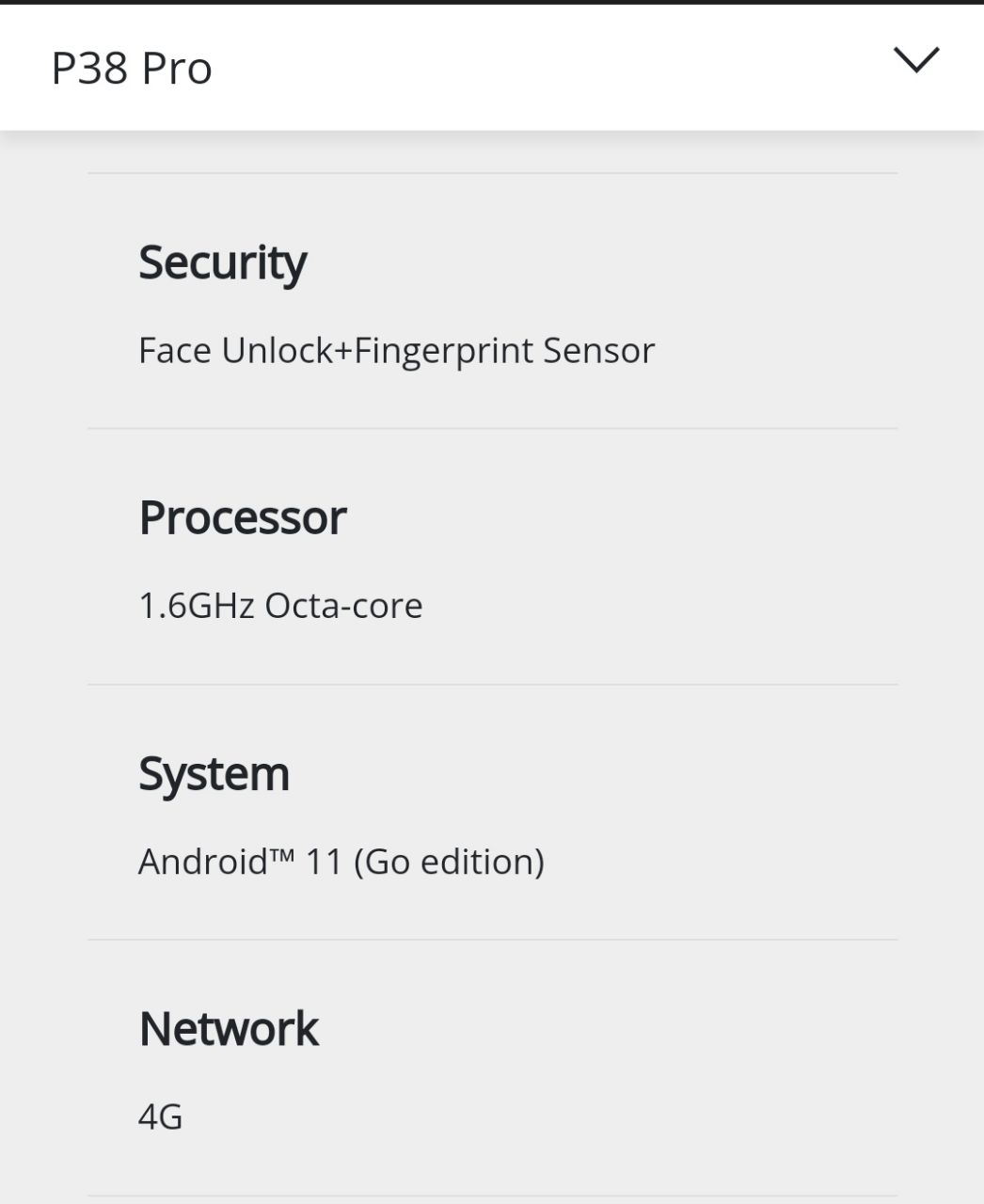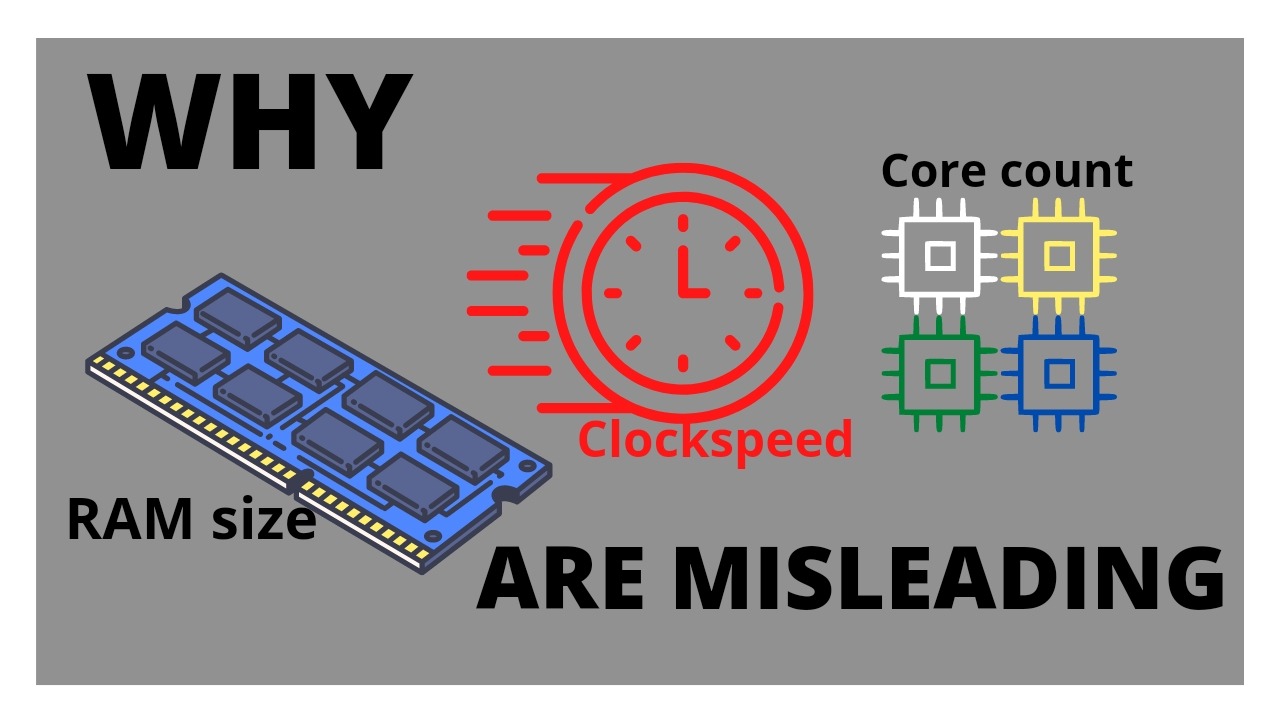In today’s article, we’re going to look at why RAM Clockspeed and core counts can be misleading.
Konami listed RAM size, Clockspeed, and core counts as needed things for playing eFootball. This plan didn’t work well. Many gaming companies do this, like Tencent for PUBG and Epic for Fortnite. It’s meant to show people what they need to play the games, but these “stated requirements are not good enough.”
Lots of phone companies also use these details in their ads. They might say, “Our phone has 2GB RAM, Octa-core, and 2.0GHz,” but they won’t say more than that.
Without further context, this info doesn’t mean much and it can lead you in the wrong direction. It’s really misleading and not good.
Why?
It doesn’t tell you how well a phone will really work. It’s just there to look good on paper.
Now, many people do not know what an SoC is, but if you mentioned any of the following:
- RAM
- Clock speed or
- Core count
They’ll immediately come alive and partake in the discussion.
A lot of people everywhere think that RAM size, clock speed, and core count, is what decides how well a phone should work. This is because phone companies have made them believe that only these things are important. That’s why we have a big issue now.
See: Introduction to Smartphones SoCs
Why RAM Clockspeed and core counts are useless gaming specs
RAM
RAM, which stands for Random Access Memory, is a fast memory chip that sits between the SoC and the storage inside a phone. Think of RAM like a worktable. It’s where the CPU keeps apps it’s working on. RAM helps the CPU do carry out several tasks at the same time.
You can compare it to car tires. Tires help the car move, but they don’t create the movement. It’s the engine that makes the car move. Tires change the engine’s power into movement we can see.
I’ve noticed a lot of people say that a big RAM makes a phone strong. That’s like saying the tires on a car decide if it moves or not. I hope you understand what I mean. Luckily, no one says silly things like that about car tires and engines. But sadly, they do say those things about RAM and SoCs.
It is the SoC (CPU + GPU) decides how much power a phone has for apps. RAM doesn’t affect this at all. The RAM gives the CPUs + GPU a place to work. That’s it.
If you have a Gionee S11 (Snapdragon 430) for example with 4GB RAM VS a Redmi Note 7 (Snapdragon 660) with 3GB RAM.
Which one do you think would perform better?
The simple answer of course is the Redmi Note 7 with the Snapdragon 660.
The SD660 has better A73 CPUs, while the SD430 has A53s. It’s clear which one is better. But many people who don’t know this will choose the device with more RAM. Then they might say something along the lines of, “I don’t get it, why can’t I play XYZ game on my 4GB RAM phone, but someone with 2 or 3GB RAM can?”
The easy answer is the processor. Just like tires can’t move without an engine’s power, RAM is no good without a good SoC. So, if someone talks about RAM size without mentioning the processor, they don’t know much or are trying to trick you.
That’s why discussing RAM alone without any extra information is not helpful.
2. Clock speed
This is how fast an SoC finishes one cycle (fetch, decode, execute). It’s the speed at which an SoC gets an app or job, understands it, does it, and shows the result on your screen.
Think of it this way, a 15-year-old boy is usually quicker than a 55-year-old man. But it doesn’t mean the boy is stronger. Imagine you drop a 50kg load and ask both to carry it. Even if the 55-year-old is slower, he’ll finish carrying the load before the boy gets halfway.
A clear example of this is comparing the Helio G35 (A53) at 2.3GHz to the Helio G90T (A76) at 2.0GHz.
People who don’t understand processors might think that because the Helio G35 has a higher clock speed, it’s better. It’s another silly argument that some folks use, and it’s really sad. Many of them are stubborn and talk loudly to confuse others.
See: How to read smartphone SoCs
Core count
Core count simply means the number of CPUs on the SoC in a phone.
- An SoC with two CPUs is called a Duo core SoC
- SoCs with four CPUs are Quad core SoCs
- If it has six CPUs we call it a Hexa core SoC
- If it has eight CPUs we call it Octa-core SoC.
Quad-core and Octa-core for Android while iPhones use Hexa core. Most companies will be glad to tell you the number of CPU cores on their smartphones. So they’ll mostly write something like this on their website…

What they won’t mention is the actual names of the eight CPUs they talk about.
The term “Octa core” isn’t a processor’s name. There’s no processor called “Octa-core.” Not a single one. I’ve never seen it. “Octa core” means there are 8 CPUs on the processor.
They do this to trick you. The CPUs could be eight A7, A9, or A53 CPUs, but they don’t want you to know. Remember, the number of CPUs doesn’t matter. What does matter is the name or type of CPU.
The A15 Bionic has only 6 cores but it’s beating the SD8 Gen1 with 8 cores on Geekbench.
The specs that matter
What really counts are the names or types of CPU cores, not some number that doesn’t make sense.
Imagine you needed to carry something heavy. Would you choose 2 strong men or 10 kids?
Now that you know all this, you’re probably realizing that eFootball’s system requirements like:
- Octa-core
- 1.5GHz
- 2GB RAM
Don’t mean anything at all.
It’s like talking about the fastest car and someone says, “For a car to be fast, it needs:
- 4 wheels
- 2 mirrors on the sides
- A trunk to store things
That’s it. That’s why these “minimum requirements” are just nonsense, and Konami knows it. This is why they put a disclaimer at the bottom stating that “even if your device meets the requirements, it might not be able to play the game”.
When RAM Clockspeed and core counts are useful
Now should you throw these specs away? No you shouldn’t. Specs such as RAM, Clock speed, or core count only make sense if you are describing an SoC or a phone.
For example, the SD720G and the Helio G90T both use A76 CPUs as their main CPUs.
So how do you tell them apart?
The SD720G runs at 2.2GHz which is faster than the Helio G90T which clocks out at 2.0GHz.
In this context, using clock speed makes a lot of sense to use.
Please leave a comment if you have any difficulty and remember to:
- Subscribe to our YouTube channel
- Follow on Facebook
- Join our Telegram community
- Participate on Reddit
- Find us on Quora
- Follow us on Instagram
- Check out the Clubhouse as well


